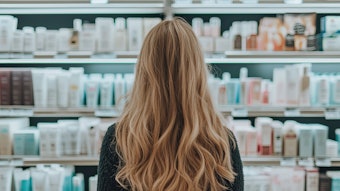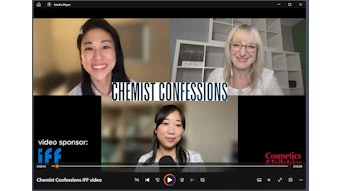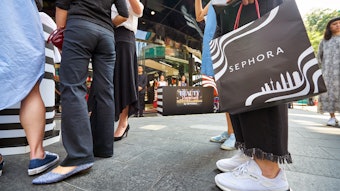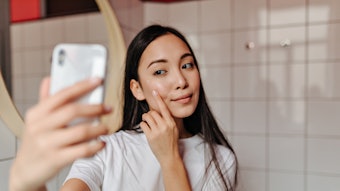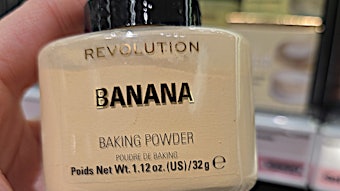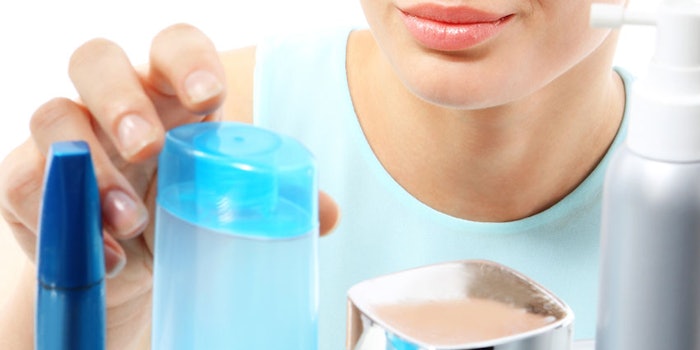
Editor’s note: This article reviews some of the history and basics of cosmetics packaging. As most formulators know, the product’s container is nearly as important, if not more so, than the ingredients in it. Not only does it protect the formula, but it is the first experience consumers have with your product, and so must not be overlooked.
The primary purpose of cosmetics packaging is to contain the product and protect it from all hazards to which it could be exposed during transport and handling (see Packaging Purposes). It also must be attractive and unique in its features to trigger an emotional response and convince the consumer to purchase it—essentially acting as a silent salesman.
There is a direct relationship between the quality of the packaging and the perceived quality of the product. Cosmetics companies try to sell not only a brand to consumers, but an image associated with certain characteristics or qualities. So even if products themselves are relatively similar, the packaging can be what sets them apart. This article examines a brief history, classes and properties of various types of packaging, and provides examples of the latest pack advances.
Packing Up
The need to carry liquid or large quantities of berries, seeds, etc., was felt by primitive man during the Mesolithic (middle) Stone Age, so the first packages consisted of cups, bowls or bags made from natural materials such as leaves, animal skin, gourds, bark or shells. Later, packages of similar shapes were fashioned from bone, wood, twigs and grasses.
For thousands of years, fabricated wooden objects also have been known. For example, the barrel with fitted staves and hoops was invented by Alpine tribes in the early days of Rome. Pottery and leather were invented after 8,000 B.C., and glass-making started around 7,000 B.C.
Interestingly, many prominent innovations in the packaging industry were first developed for military purposes.
Pack Classes
Paper was used in China in the 16th century A.D. The earliest recorded use of paper for packaging dates back to 1035 A.D., when a Persian traveler visiting markets in Cairo noted that vegetables, spices and hardware were wrapped in paper for the customers after they were sold.
The use of tinplates for packaging dates back to the 18th century, whereas the first corrugated box was produced commercially in 1817 in England. It was not until 1952 when Michigan State University became the first university in the world to offer a degree in Packaging Engineering. Interestingly, many prominent innovations in the packaging industry were first developed for military purposes.
Pack Classes
Packaging often is classified according to common properties, the materials from which it is made, or its contents. It is also commonly categorized by functional layer, e.g., primary, secondary, etc.:
- By common properties: This class may include flexible, semi-rigid or rigid packages; breakable or non-breakable packages; transparent or opaque packages; and liquid- or gas-tight packages.
- By material makeup: Examples include glass bottles, metal cans, cardboard cartons, wooden crates, paper labels, plastic bottles, laminate tubes, etc.
- By contents: This class can be vast as it comprises everything from beverage packaging, food packaging and hardware packaging, to drugs and cosmetics packaging, etc.
- By functional layers: Primary packaging is in direct contact with the contents. It is the material that first envelops the actual product and contains it. This usually is the smallest unit of distribution or use. Secondary packaging is outside the primary packaging and in some cases, is used to group primary packages together. Tertiary packaging is used for bulk handling, warehouse storage and transport shipping. The most common form is a palletized unit load that packs tightly into containers.
Packaging should initially be chosen by considering whether product interactions could result in the weakening of the package, partial destruction of the product, or both.
Pack in Action
As noted, the package is merely a part of the system by which a product is marketed and distributed. In most packaging operations, the product is formulated first and then placed in the package—although ideally, the packaging concept is provided at the beginning of the product development process.
Each step in the packaging process must be carefully considered and controlled since improper design can interfere with opening, filling or closing operations. Thus, it is important to consider the package not only performs the static duty of containing and protecting the product, it also must be dynamic and efficiently move through packaging operations. This includes warehouse stacking and transportation. The best way to ensure its dynamic performance is to submit the packaging to extensive testing. This includes simulated abuse testing in the laboratory and actual performance tests in the plant, warehouse and transportation system.
Glass Packaging
Glass has served the cosmetics industry as an efficient container for many centuries. It is relatively economical, can be handled at high speeds on production lines and is inert, thus giving it excellent product compatibility. It is also completely impermeable to all gases, solutions or solvents. And if the product it contains is sensitive to light, amber glass or cartoning can be used.
Glass presents an excellent brand or product image. It provides clarity, sparkle, design and possible colors, for good product identification. It also can be molded into attractive designs.
Glass is manufactured using many different formulas but the most common for packaging is soda lime glass. This consists of silica (from sand), calcium carbonate (limestone), sodium bicarbonate (soda ash), aluminum oxide and trace oxides. It is trace oxide that provides color to glass. The only major disadvantages of glass are its fragile nature and weight.
Glass-making methods are thousands of years old but only in recent years have fully automated methods been developed to manufacture glass components. Various glass molding processes include suction, press and blow flow, or blow and blow flow.
Metal Packaging
Metals were first used as containers at least as early as 4,000 B.C. Today, steel, tinplate and aluminum are used for packaging. Metal containers are strong, relatively unbreakable, opaque and impervious to moisture vapor, gases, odors and bacteria—provided they are pinhole-free. They also are resistant to both high and low temperatures.
However, metals require the application of coatings and lacquers to prevent chemical reactions and corrosion from both the inside and outside. Special coatings and coating techniques have been developed for this application.
Metal containers are available in a variety of shapes, sizes and styles ranging from small elongated collapsible tubes and shallow drawn containers, to large built-up containers including steel drums. In cosmetics, predominantly aerosols and specialized cosmetics such as lipsticks have used metal containers, among other components. The use of collapsible aluminum tubes is also widespread for almost all varieties of semi-solid products including emulsions, pastes and gels.
Plastic Packaging
Plastic dominates packaging for producing primary components and point-of-sale materials. Two main types are used: thermoplastic resin and thermosetting resin.
Thermoplastic: Thermoplastic resins can be extruded at their melt temperature and then blow- or injection-molded. After cooling, the resin also can be re-melted by heating it to the limits of thermal fatigue and oxidation. Examples of thermoplastics include polyvinyl chloride (PVC), low density polyethylene (LDPE), high density polyethylene (HDPE), polypropylene and polystyrene.
Thermosetting: Thermosetting resins are molded using an irreversible chemical reaction. These tend to be rigid, hard, insoluble and unaffected by heat up to decomposition temperature. Generally, these so-called amino plastics are produced by reacting formaldehyde with amino compounds. Their applications range from electrical equipment such as switch plates, sockets or circuit breakers, to work surface laminates, etc. These are generally processed by compression molding. In cosmetics, thermosetting resins are typically used for caps and closures.
Mixed and Matched Packs
Aligning with the growth of the cosmetics industry, the variety of package forms and types has mushroomed. Rigid materials like plastic bottles, boxes, vials, trays, sleeves and closures are used for the primary packaging of cosmetics products. Paper, cardboard and corrugated cartons and boxes are often used for secondary and tertiary packaging.
While rigid packages such as tin boxes and glass bottles appeal to specific market segments, flexible packages adapt to nearly all segments. Solids, liquids, ointments and powders alike can be packaged in flexible units.
Laminates have found application particularly in the production of flat sachets and collapsible tubes.
The three basic structural components in flexible packaging are: paper, plastic film (i.e., cellulose acetate, polyethylene, PVC, PP, etc.) and metal foil. A single-ply package will be constructed from only one of these substrates but in some cases, the esthetics or functionality required for cosmetics and personal care products are not always available from a single material. This can usually be solved using composite materials in laminar form.
More complex structures are made from laminations of multiple plies. Adhesives and hot melts are used to stick plies together, and decorative and functional coatings may be applied to outer and inner surfaces. Laminates have found application particularly in the production of flat sachets and collapsible tubes as alternatives to pure metal tubes for toothpastes. Here, the flat sachets and heat-sealed around the periphery. This combines the appearance of plastics with the impermeability and collapsibility of aluminum since, even in the thinnest gauges, it offers the best barrier properties.
All the various packaging components can also be printed to give a wide range of decorative effects. Different processes including screen-printing, letterpress, flexography, offset lithography or gravure printing can be used, depending on the application.
Pack and Product Compatibility
Compatibility testing is performed when the final product formula and packaging system have been decided. Packaging should initially be chosen by considering whether product interactions could result in the weakening of the package, partial destruction of the product, or both. These undesired results can occur from permeation, sorption, leaching, photochemical reaction or chemical reaction. Thus, the behavior of the product while in contact with package, and vice versa, must be assessed in order to avoid any possible interactions.
The effects of spillage on the outside of the pack as well as shelf-life also must be tested. Furthermore, the packaging must be assessed for usability by the consumer, local customs and the climate where it will be marketed.
Pack Protection and Security
It is well-known (or should be) that product counterfeiting is an intellectual property (IP) crime. Counterfeits made to look like those developed by reputable manufacturers are illegal, and inferior product copies can have a serious impact on the health and safety of the consumer.
The counterfeiting of cosmetic products, particularly higher-end luxury and prestige products, continues to be a significant issue.
Preventing the counterfeiting of sensitive and vulnerable products is therefore a big business, globally, and one in which packaging plays a crucial role. Several methods are often adopted to prevent counterfeiting, including holograms, 3D printing, fluorescent UV ink, thermal reactive and color-shifting inks, and RFID technologies. The counterfeiting of cosmetic products, particularly higher-end luxury and prestige products, continues to be a significant issue.
Pack Advances
Some examples of the latest innovations in packaging are described here:
- Marc Jacobs Lipstick is designed in the shape of stylized pencil, made from metallic materials.
- Airless compacts for higher viscosities and high-coverage foundation formulas are available with and without a foam cushion.
- Foil pillow pouches have been introduced by Unit Pack, in which the foil unit pack has a metering channel and an iris tip to control flow of dispensed liquid without spilling. The high-barrier foil ensures stability and prevents contamination. It also tears easily, allowing neat discharge of the product.
- Miniature-sized packaging can be referred to by many names like unit dose, trial-sized, travel/amenity, sample and limited use; the sachet is one such example. These can be used to create buzz around a new product, allow users to experience a new product, or give users a convenient way to travel with the products they already love. They also extend the reach of products to those who cannot afford large amounts.
- Arcade Beauty’s Fusion pack allows a sampling format for products that need to be separated until time of use, as well as for single formulas that cannot be in contact with an applicator until use.
- The ultra slim spray bottle from Phoenix was honored with a gold award for excellence in technological advancement and enhanced user experience. The design enables users to carry and dispense 11 mL of fluid of mouthwash, hairspray, hand sanitizer or sunscreen. It is fitted with pump housing that allows consumers to spray the product, while keeping the package leak-proof.
- Axilone has a “one-handed” lipstick designed with multi-tasking user in mind. It also created Vaposphere, a single-handed capping system based a locking ring that can be turned with two fingers to open the sphere-shaped cap and activate the spray.
- Aptar created Skin Master, a pen designed to apply facial skin care directly to the laugh lines, eyelids, bags and under-eye area, and skin imperfections. Its pump architecture allows adjustable side actuation and continuous formula dispensing. The device also is equipped with three standard tips for three types of application and sensations on the skin.
- An antiseptic mascara brush was developed based on the principle of depositing, onto the fibers of the mascara brush, an insoluble salt composed of a broad-spectrum preservative. The most appropriate fibers are polyamide. The insoluble salt on the filament is stable and does not disintegrate upon contact with water or o/w mascara. The brush is dipped in the cation/anion mixture, rinsed and dried via a rotary drying system to obtain a uniform and homogeneous deposit. This cleansing, antiseptic solution has good thermal stability.
- Promen developed the Slidissime airless jar, which combines protection with sensuality. It allows cosmetics creams to be released by a simple slide and thus remains fully protected.
Environmentally Friendly Packaging
Finally, a growing awareness of the environmental crisis is fueling eco-friendly innovation in the design and manufacturing of materials used for packaging. Following are some examples:
- Bamboo packaging, for one, is eco-friendly and bio-degradable.
- Paper also is being created from stone. Limestone or calcium carbonate, for example, is being used to create tree-free paper. TerraSkin is one paper made from limestone that starts to degrade six to nine months after direct exposure to sunlight. Furthermore, the limestone to produce it is collected as waste material from the construction industry.
- Bio-based jars have been made using a hybrid resin comprising tapioca and potato blended with traditional petroleum-based polypropylene.
- Cellulose acetate film is made from wood pulp taken from a sustainably managed forest. This film is used for laminations, carton windows, labels, etc., and has clarity, gloss and a scuff-resistant finish.
- PhoenixBotanicals has designed a lip balm packaged in eco-friendly paper push-up tubes.
- RPC Cresstale has developed 100% biodegradable lipstick and compact containers. The packs are produced using PHA, a polymer produced from organic sugars and oils that break down in soil, composting, waste treatment precesses, river waters and marine environment. The company also designed its Revolve mechanism, which boasts a unique collapsible tower. This allows the lipstick, including the decorative cover and base, to be made in four molded parts and from one single material, instead of the conventional five components, requiring several different materials.
- TPC also has developed biodegradable compact and lipstick containers using polylactic acid, which is derived from starch-rich plants such as corns and grains.
- Vista Packaging launched bio-sugar tube packaging as replacement option to traditional plastic.
- And The Body Shop has teamed up with Newlight, a sustainable materials company that uses captured carbon to manufacture plastic.
Conclusions
Packaging plays an important role in making cosmetics and personal care products stand out from the competition, and seducing the consumer. As described, the first impression of a product is often based on the quality of the design and manufacturing of pack components, so the pack can help contribute to the purchasing decision of consumer.


